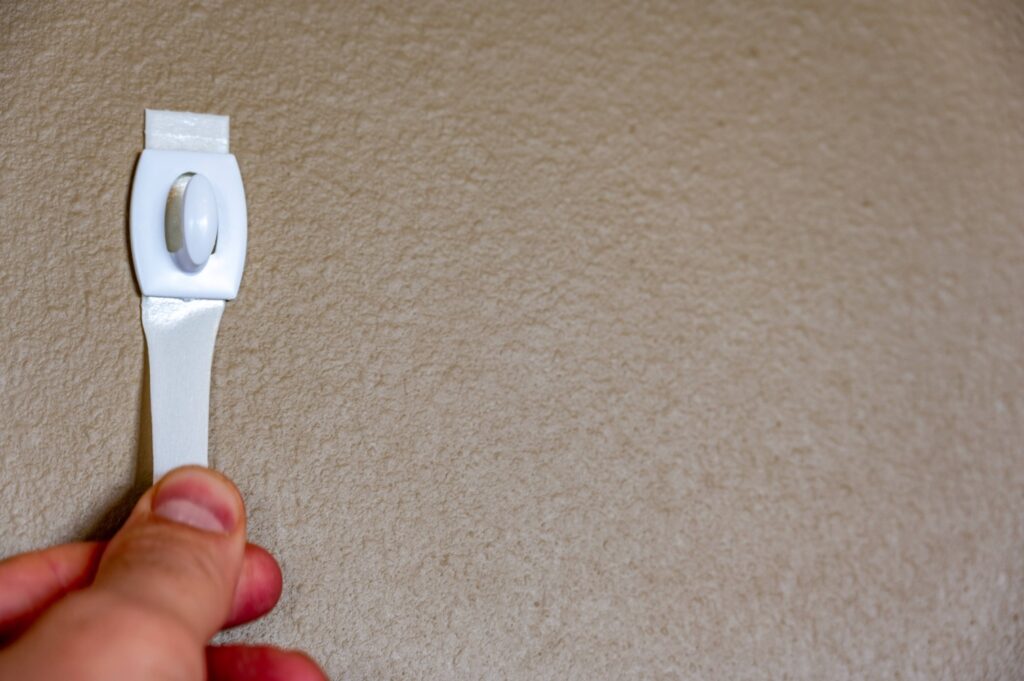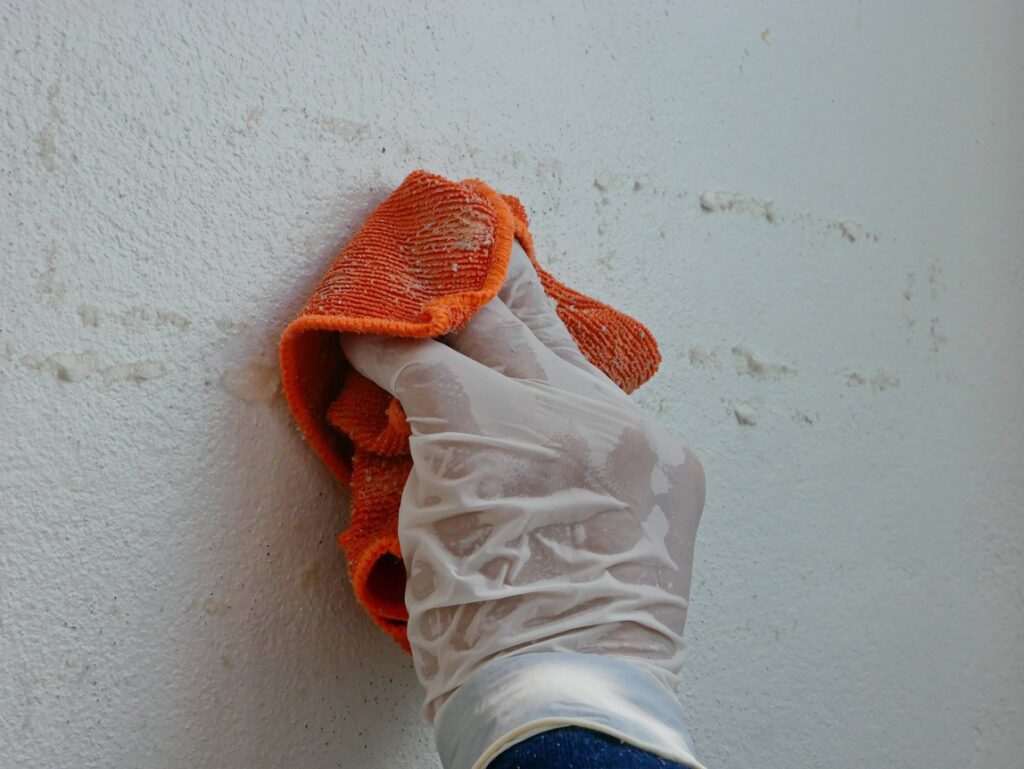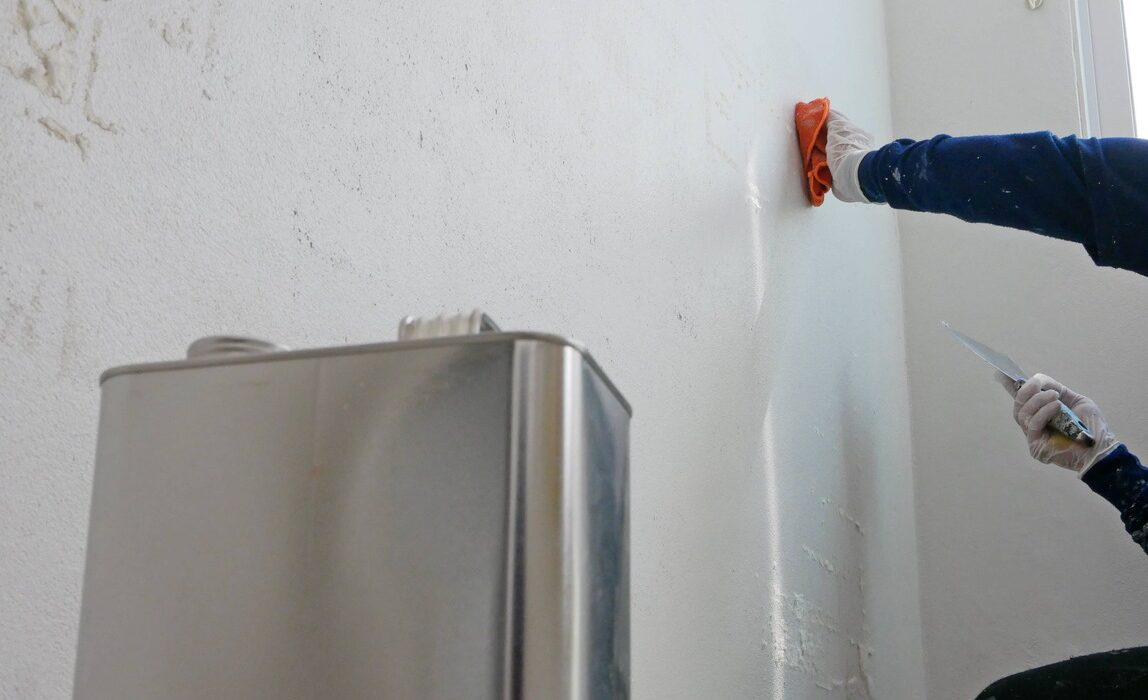Adhesives are substances used to bind materials together, commonly found in tapes, stickers, and wallpapers. When these items are removed from walls, they may leave behind a sticky residue. The composition of the adhesive can cause it to firmly bond to wall surfaces, complicating its removal. Nowadays, there are so many things we can use to hang things up that don’t require a nail in the wall, but an adhesive may be stubborn to remove when we change our minds. You will learn why the adhesive sticks, the safety tools you need, how to prepare the walls, and how to get adhesive off the wall.
Let’s find out more!
What is Adhesive?
The adhesive is a material capable of holding two surfaces together strongly and durably. It comes in various forms such as liquid glue, paste, tape, and film, and it’s designed to work on different materials including paper, plastic, metal, and wood.
How Does Adhesive Get Stuck on the Wall?
The adhesive gets stuck on the wall through a process where it reacts with the surface at a molecular level, creating mechanical bonds that can be difficult to break without the right technique or tools.
Safety Tools Needed to Remove Adhesive From the Walls
When undertaking the task of removing adhesive from walls, prioritizing safety is paramount. It’s essential to protect yourself from potential harm caused by exposure to cleaning solutions or heat. Here are some key safety precautions to observe:
Personal Protective Equipment (PPE):
- Gloves: Always wear gloves, preferably nitrile or rubber, to shield your skin from irritation and chemical burns that solvents or other cleaning agents can cause.
- Eye Protection: Safety goggles or glasses should be worn to prevent accidental splashes of cleaning solutions from reaching your eyes, which could result in serious injury.
Safe Use of Heat Guns:
- Distance and Temperature: Keep the heat gun at a safe distance from both the wall and your body, and use the lowest effective temperature setting to avoid overheating the adhesive or wall surface.
- Flammable Materials: Be aware of any flammable materials in the vicinity when using a heat gun, as high temperatures can ignite these substances.
- Ventilation: Ensure the area is well-ventilated to disperse fumes from heated adhesives and to reduce the risk of inhaling toxic vapors.
Handling Cleaning Solutions:
- Read Labels: Before using any commercial cleaner, read the label for specific safety instructions and adhere to the recommended usage guidelines.
- Ventilation: Work in a well-ventilated space to minimize inhalation of fumes, which can be harmful to your respiratory system.
- Skin and Eye Contact: Avoid direct contact with the skin and eyes. If contact occurs, rinse immediately with plenty of water and seek medical attention if necessary.
General Safety Tips:
- Test Products: Conduct a patch test with your chosen cleaning solution on a small, inconspicuous area of the wall to ensure it does not cause damage.
- Secure Area: Keep children and pets away from the work area to prevent accidental ingestion or exposure to cleaning products and tools.
- Proper Disposal: Dispose of any used cloths, sponges, or chemicals according to local regulations to prevent environmental contamination or accidental poisoning.
By following these safety precautions, you can effectively remove adhesive from walls while minimizing the risk of personal injury or property damage. Remember, if you’re unsure about the safety of a particular method or product, it’s best to consult a professional.

Tools Needed to Get Adhesive Off the Wall
To effectively remove adhesive, you will need:
- Plastic putty knife or scraper
- Clean cloth or sponge
- Warm water
- Liquid dish soap or adhesive remover
- Hairdryer or heat gun (optional)
- Rubbing alcohol (for stubborn adhesives)
How to Prepare to Get Adhesive Off the Wall
Before you begin, ensure the area is well-ventilated. Protect the flooring beneath the work area with newspaper or a drop cloth, and have all the necessary tools at hand. Lastly, test any cleaning solutions on an inconspicuous part of the wall to check for adverse reactions.
When dealing with the removal of adhesive from walls, it’s crucial to choose a cleaning solution that is both effective on the adhesive and safe for the wall surface. Here are some tailored solutions based on different types of adhesives and wall surfaces:
Light Adhesive Residues:
- Soapy Water: A mixture of warm water and dish soap can often do the trick for light residues. It’s gentle on most painted walls and wallpapers.
- Vinegar Solution: White vinegar mixed with water can also be used as a natural alternative to commercial cleaners.
Medium-Strength Adhesives:
- Rubbing Alcohol or Isopropyl Alcohol: Effective on more stubborn residues, rubbing alcohol can break down the adhesive without harming the paint if used sparingly.
- WD-40 or Similar Lubricants: These can be particularly effective on sticker residue but should be used cautiously due to their potential to stain or discolor certain wall finishes.
Strong Adhesives:
- Commercial Adhesive Removers: Products like Goo Gone or Goof Off are formulated to tackle tougher jobs. In addition, always follow the manufacturer’s instructions and test in an inconspicuous area first.
- Acetone or Nail Polish Remover: This can work on very strong adhesives, such as those found in duct tape or industrial tapes, but they may damage the wall’s finish and should only be used as a last resort.
Delicate Surfaces:
- Wallpaper: Use a wallpaper steamer or a damp sponge to moisten and gently remove the adhesive. Additionally, avoid harsh chemicals that could penetrate and ruin the wallpaper.
- Antique Plaster or Fresco: It’s best to consult a professional, but if attempting DIY, use the gentlest method possible. Start with warm water and escalate only as necessary with extreme caution.
Painted Walls:
- Latex Painted Walls: Stick with gentler options like soapy water or vinegar solutions. These paints can be sensitive to harsh chemicals and abrasion.
- Oil-Based Painted Walls: These can typically withstand stronger cleaning agents, but always perform a spot test first.
Unpainted Drywall:
- Drywall: Be extra cautious as the outer paper layer can tear easily. Start with warm water and escalate to a mild detergent if necessary.
Tips for Using Cleaning Solutions
When using cleaning solutions, you want to make sure you always wear gloves to protect your hands. This is especially true when using chemical solvents. Also, apply the cleaning solution using a cloth or sponge rather than pouring it directly onto the wall to avoid excess moisture that can seep into and damage the wall. Additionally, work in small sections to maintain control over the area being cleaned. Lastly, after removing the adhesive, rinse the area thoroughly with water to ensure no cleaning agent remains on the wall.

How to Get Adhesive off the Wall
Now that you know the safety tools you need, and the tools to get the adhesive off the wall, it’s time to look at the steps of getting adhesive off the wall.
- Apply Heat: Soften the adhesive by applying heat with a hair dryer or heat gun, being careful not to damage the wall.
- Scrape Gently: Using the plastic putty knife or scraper, gently peel away at the adhesive.
- Apply Cleaning Solution: Mix warm water with a few drops of liquid dish soap or use a commercial adhesive remover, applying it to the residual adhesive.
- Wait and Wipe: Allow the solution to sit for a few moments, then wipe with a clean cloth or sponge. Once the adhesive has been removed, rinse the area with plain water and a clean cloth to remove any remaining cleaning solution. This step ensures that no slippery or sticky residue remains which could attract dirt or dust.
- Drying time: After rinsing, allow the wall to air dry completely. Also, if needed, pat the area with a dry towel to absorb excess moisture. Avoid using direct heat to speed up this process as it may damage the wall.
Additional Tips to Get Adhesive Off the Wall
- Always use gentle pressure to avoid damaging the wall surface.
- For sensitive paint jobs, consider using products specifically designed to remove adhesives without harming the finish.
- If any residue persists after wiping with soapy water, rubbing alcohol can be effective in removing the more stubborn adhesive.
Wall Maintenance
Now that you know about how to get adhesive off a wall, it is time to learn about other maintenance of the walls. One of those is getting pencil off the walls. Pencil marks will inevitably end up on the walls. This is because people always walk around with them and don’t pay attention to where they are going. The other issue is children will think it is fun to write on them. You need toothpaste, melamine sponges, gum eraser, mild detergent, or mayonnaise to get the pencil off the wall.
Another is fixing an area that has chipped paint. Chipped paint happens with low-quality paint excessive moisture, and poor surface preparation. You can fix it by preparing the area and sanding it, priming it, and patching.
When Do I Call a Professional?
If the adhesive covers a large area, if you are dealing with particularly strong industrial adhesives, or if your wall is made of delicate materials like wallpaper or antique plasterwork, it might be best to call a professional. This is because they can do this safely and efficiently. Depending on how much adhesive is on the wall, where it is and other factors, calling a professional may be helpful.
Conclusion
Removing adhesive from a wall can be a straightforward DIY task when using the correct methods and tools. Patience and care are key to ensuring the wall remains undamaged in the process. However, if the job proves too challenging or risks potential damage to the wall, seeking professional help is recommended. The last thing you want to do is damage your walls. This is a good time to reach out to Edifice Inspections in Peachtree Corners, GA to conduct a home inspection.


1 Comment
Comments are closed.